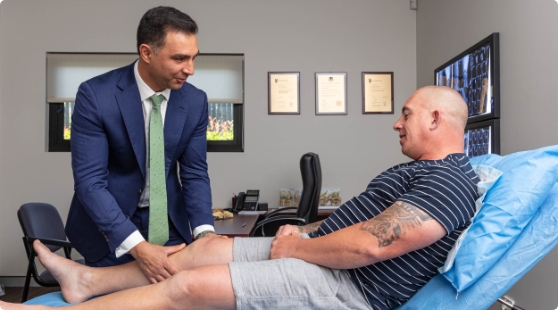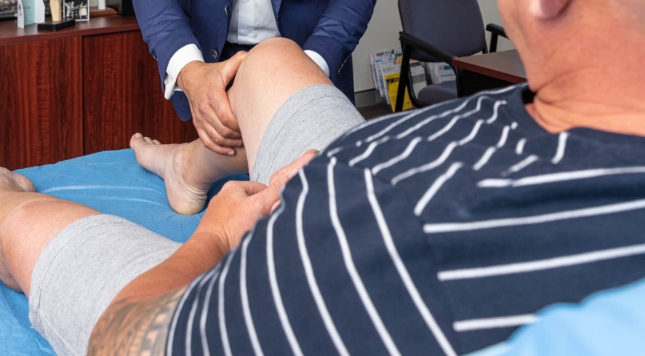Knee Arthroscopy Treatments
The Knee Arthroscopy Procedure
Knee arthroscopy is performed under general anaesthesia or sometimes under spinal anaesthesia. Your anaesthetist will decide the best method for you depending on your age and health condition.
- Two or three small incisions are made around the knee.
- Sterile saline solution is injected into the knee to push apart the various internal structures. This provides a clear view and more room for the surgeon to work.
- An arthroscope, a narrow tube with a tiny video camera on the end, is inserted through one of the incisions to view the knee joint. The structures inside the knee are visible on a video monitor in the operating room.
- The structures inside the knee joint are assessed to determine the cause of the problem.
- Once a diagnosis is made, surgical instruments such as scissors, motorized shavers, or coblators are inserted through another small incision, and the repair is performed based on the diagnosis.

The repair procedure may include any of the following:
- Removal or repair of a torn meniscus.
- Reconstruction or repair of a torn cruciate ligament.
- Removal of small torn pieces of articular cartilage.
- Removal of loose fragments of bones.
- Removal of inflamed synovial tissue.
- Removal of baker’s cyst.
- Realignment of the patella.
- Making small holes or micro fractures near the damaged cartilage to stimulate cartilage growth.
After the repair, the knee joint is carefully examined for bleeding or any other damage. The saline is then drained from the knee joint. Finally, the incisions are closed with sutures or steri-strips, and the knee is covered with a sterile dressing.
Book an Appointment Today!
After the Surgery
Most patients are discharged the same day after knee arthroscopy. Recovery after the surgery depends on the type of repair procedure performed. Recovery from simple procedures is often fast. However, recovery from complicated procedures takes a little longer. Recovery from knee arthroscopy is much faster than that from an open knee surgery.
Patients are allowed to full weight bear on the operated leg after routine arthroscopy with only a soft bulky crepe bandage and without braces. Crutches or a knee brace may be recommended for several weeks in more complex surgery such as meniscal repair or ligament reconstruction.

The operated knee is iced intermittently (cryotherapy) over the dressing for the first 24-48 hours as tolerated. The bulky dressings are removed the next day and the adhesive inner dressings are kept until wound review two weeks after surgery. In most cases, rehabilitation and physiotherapy can commence straight away.
Analgesics are prescribed to manage pain. Therapeutic exercises aim to restore motion and strengthen the muscles of the leg and knee.
Risks and complications
Knee arthroscopy is a safe procedure and complications are very rare. Complications specific to knee arthroscopy include bleeding into the knee joint, infection, knee stiffness, blood clots or continuing knee problems.
